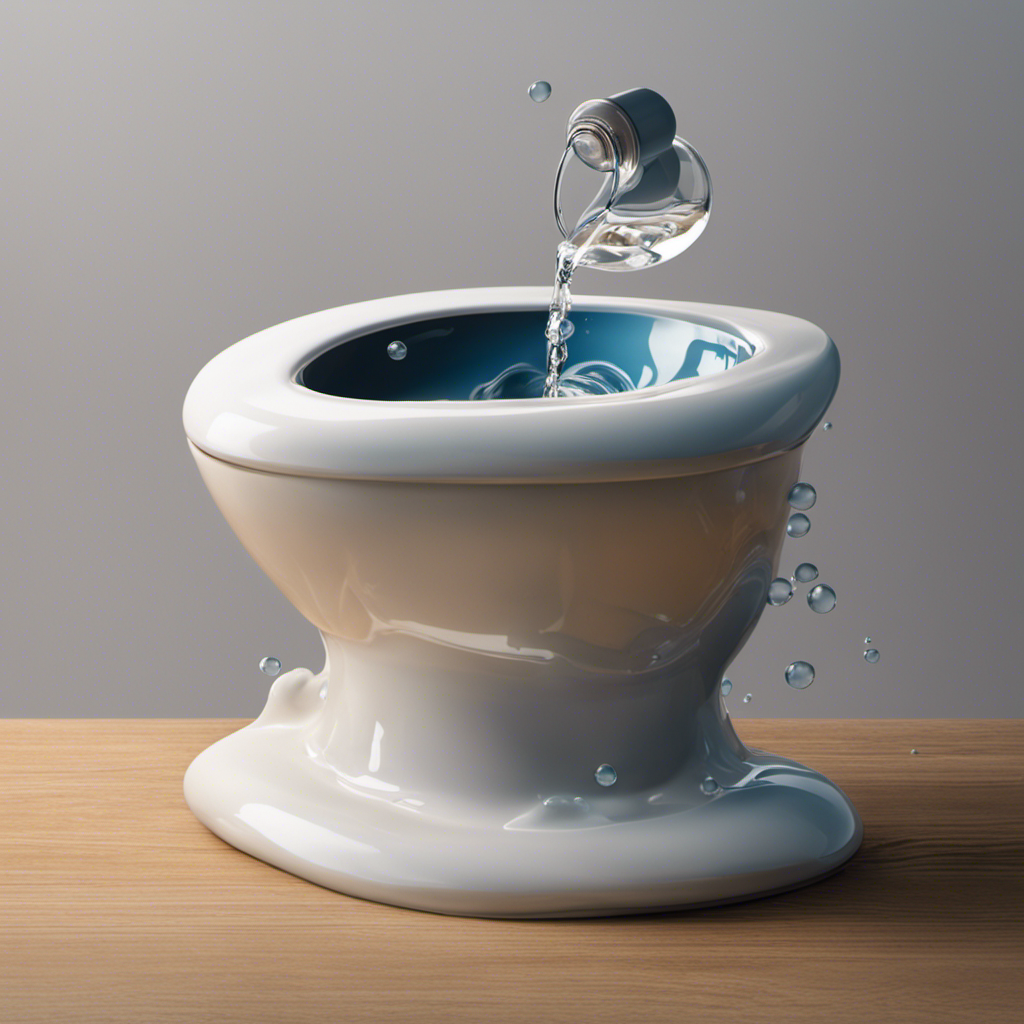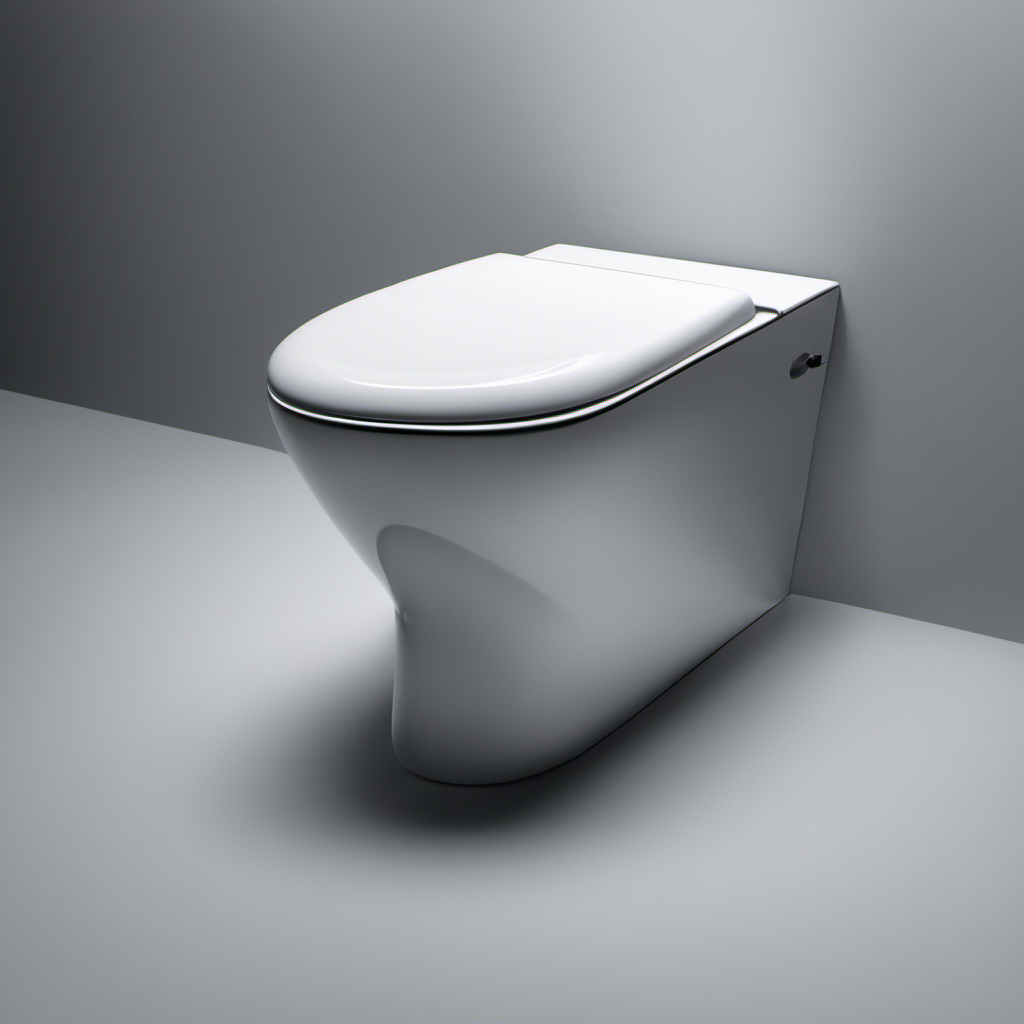Do you have a clogged toilet that needs quick relief? Look no further than the power of dish soap! Discover the science behind this household staple and learn how its ingredients work to unclog your toilet.
In this step-by-step guide, we’ll show you the proper technique to use dish soap effectively. Avoid common mistakes and find out exactly how long it typically takes for dish soap to work its magic and unclog your toilet.
Get ready to say goodbye to clogs in a jiffy!
Key Takeaways
- Dish soap is a cost-effective and efficient option for unclogging toilets.
- It breaks down grease and grime that cause clogs.
- Dish soap contains surfactants that reduce water’s surface tension and dissolve blockages.
- The time it takes for dish soap to unclog a toilet varies depending on the severity of the clog.
The Science of Dish Soap and Toilet Clogs
Did you know that dish soap can actually help to unclog a toilet?
When it comes to unclogging methods, dish soap stands out as a cost-effective and efficient option. Unlike other unclogging methods that may require harsh chemicals or tools, dish soap offers a gentler approach. It works by breaking down the grease and grime that may be causing the clog, allowing it to be easily flushed away.
The effectiveness of dish soap on different types of clogs can vary. For minor clogs caused by organic matter, such as toilet paper or waste, dish soap can work wonders. However, for more stubborn clogs caused by non-biodegradable materials or foreign objects, additional methods may be necessary.
Understanding the Ingredients in Dish Soap for Unclogging Toilets
To understand the ingredients in dish soap for unclogging toilets, you should familiarize yourself with their properties and effectiveness. Dish soap, a common household cleaning agent, contains surfactants that help break down grease and grime. These surfactants work by reducing the surface tension of water, allowing it to penetrate and dissolve blockages in the toilet drain.
Additionally, dish soaps often contain enzymes that aid in the breakdown of organic matter, such as toilet paper and waste. However, it is important to note that while dish soap can be effective in unclogging toilets, it may not work for more severe blockages or large objects lodged in the drain. Furthermore, using excessive amounts of dish soap can lead to excessive foaming and potential overflow, so it is crucial to use it cautiously.
Now that you understand the effectiveness and properties of dish soap for unclogging toilets, let’s move on to a step-by-step guide to using it for toilet unclogging.
Step-by-Step Guide to Using Dish Soap for Toilet Unclogging
Now that you’ve familiarized yourself with the effectiveness and properties of dish soap for unclogging toilets, let’s dive into a step-by-step guide on how to use it.
When it comes to toilet unclogging alternatives, using dish soap is a natural and effective solution. First, start by pouring a generous amount of dish soap directly into the toilet bowl. The soap will act as a lubricant, helping to break down any clogs and allowing them to slide through the pipes more easily.
Next, let the dish soap sit in the bowl for about 15-20 minutes. This will give the soap enough time to penetrate the clog and loosen it up. After the designated time, flush the toilet and observe if the clog has been cleared. If not, you may need to repeat the process or try a different method.
As you can see, using dish soap to unclog a toilet is a simple and natural way to tackle this common household problem.
Transition: However, there are some common mistakes that people often make when using dish soap to unclog a toilet. Let’s take a look at these mistakes and learn how to avoid them for a successful unclogging experience.
Common Mistakes to Avoid When Using Dish Soap to Unclog a Toilet
One common mistake people often make when using dish soap for toilet unclogging is not allowing enough time for the soap to penetrate the clog. Dish soap can be an effective tool for breaking down clogs in toilets, but it needs time to work its magic.
To ensure the best results, here are four mistakes to avoid when using dish soap for toilet unclogging:
-
Rushing the process: Give the dish soap enough time to penetrate the clog and loosen it up. This can take anywhere from 15 minutes to an hour, depending on the severity of the clog.
-
Using too much soap: While dish soap is effective, using an excessive amount won’t provide better results. Stick to the recommended amount to avoid wasting soap and creating unnecessary foam.
-
Not using hot water: Warm water helps to enhance the effectiveness of dish soap. Before pouring the soap into the toilet, make sure to fill a bucket with hot water and pour it into the bowl.
-
Not using a plunger: Dish soap alone may not be sufficient to completely clear the clog. After allowing the soap to work its magic, use a plunger to provide additional force and help dislodge the clog.
How Long Does It Typically Take for Dish Soap to Unclog a Toilet?
If you’re wondering how much time it usually takes for dish soap to penetrate and break down a toilet clog, it can vary depending on the severity of the blockage.
Dish soap is effective in unclogging toilets as it contains surfactants that help to break down grease and grime.
When you pour dish soap into a clogged toilet, it works by lubricating the pipe and loosening the blockage.
The effectiveness of dish soap can be comparable to traditional toilet plungers, but it may take longer for the soap to fully dissolve the clog.
If you’re looking for alternative methods to unclog a toilet without dish soap, you can try using a plunger, a plumbing snake, or a mixture of baking soda and vinegar.
These methods can also be effective in breaking down and removing toilet clogs.
Conclusion
In conclusion, using dish soap to unclog a toilet is a practical and efficient solution. By understanding the science behind dish soap and its ingredients, you can confidently follow the step-by-step guide to effectively tackle the clog. Avoiding common mistakes will ensure a successful outcome.
But how long does it take for dish soap to work its magic? Patience is key, as it may take some time for the soap to break down the clog. Remember, a little persistence goes a long way in achieving a smoothly functioning toilet.










